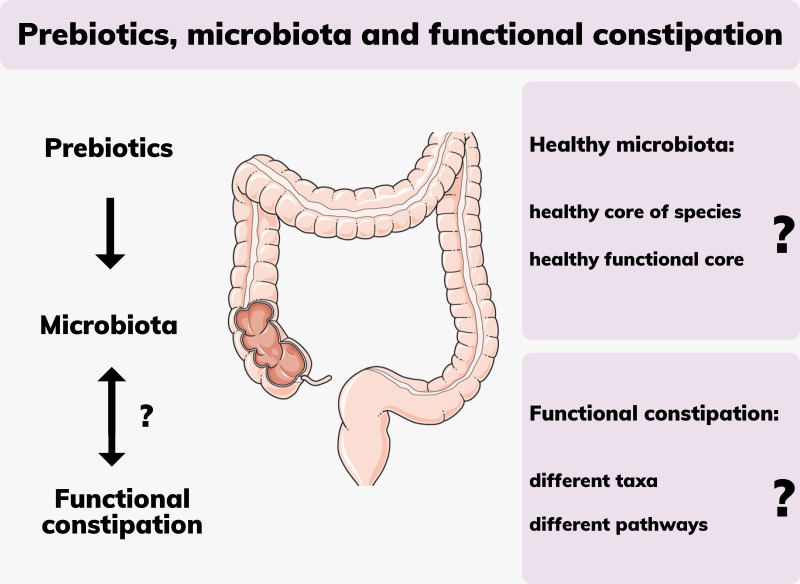- Record: found
- Abstract: found
- Article: found
Functional constipation and the effect of prebiotics on the gut microbiota: a review

Read this article at
Abstract
Abstract
Functional constipation is a significant health issue impacting the lives of an estimated 14 % of the global population. Non-pharmaceutical treatment advice for cases with no underlying medical conditions focuses on exercise, hydration and an increase in dietary fibre intake. An alteration in the composition of the gut microbiota is thought to play a role in constipation. Prebiotics are non-digestible food ingredients that selectively stimulate the growth of a limited number of bacteria in the colon with a benefit for host health. Various types of dietary fibre, though not all, can act as a prebiotic. Short-chain fatty acids produced by these microbes play a critical role as signalling molecules in a range of metabolic and physiological processes including laxation, although details are unclear. Prebiotics have a history of safe use in the food industry spanning several decades and are increasingly used as supplements to alleviate constipation. Most scientific research on the effects of prebiotics and gut microbiota has focussed on inflammatory bowel disease rather than functional constipation. Very few clinical studies evaluated the efficacy of prebiotics in the management of constipation and their effect on the microbiota, with highly variable designs and conflicting results. Despite this, broad health claims are made by manufacturers of prebiotic supplements. This narrative review provides an overview of the literature on the interaction of prebiotics with the gut microbiota and their potential clinical role in the alleviation of functional constipation.
Related collections
Most cited references67

- Record: found
- Abstract: found
- Article: found
Structure, Function and Diversity of the Healthy Human Microbiome
- Record: found
- Abstract: found
- Article: not found
A human gut microbial gene catalogue established by metagenomic sequencing.
- Record: found
- Abstract: found
- Article: found
